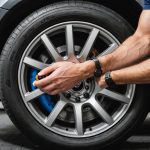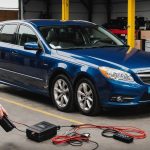The allure of the open road beckons to motorcycle riders, promising adventure, freedom, and a thrilling escape from the mundane. However, embarking on a motorcycle trip without proper preparation can quickly turn a dream into a nightmare. With the right planning, gear, and mindset, you can ensure your long-awaited ride is smooth and enjoyable. In this article, we explore the essential steps to prepare for a motorcycle road trip, helping you avoid common pitfalls and making the most of your journey.
Selecting the Right Gear for Your Journey
Choosing the appropriate gear for your motorcycle road trip is a crucial step in ensuring both safety and comfort. The right equipment can significantly enhance your riding experience and minimize the risk of accidents. Riders must prioritize quality over style, focusing on protective features and functionality.
Also to discover : How do you troubleshoot common motorcycle engine issues effectively?
Helmet and Protective Wear
Selecting a helmet that meets safety standards and fits snugly is non-negotiable. Opt for a full-face helmet to shield you from wind, debris, and potential impacts. Supplement your protection with a durable jacket and pants made from abrasion-resistant materials.
Footwear and Gloves
Invest in high-quality boots that offer ankle support and traction. Gloves should provide a firm grip and protect your hands from elements like rain and cold.
Have you seen this : What are the top features to look for in a motorcycle helmet?
Weather-Appropriate Clothing
Weather conditions can be unpredictable, so layer appropriately. Waterproof and breathable gear will keep you dry in rain, while ventilated fabrics are ideal for warmer days. Plan to carry extra layers for fluctuating temperatures.
Safety Accessories
Equip your bike with additional safety gear like high-visibility vests and reflectors. These enhancements improve your visibility to other riders and drivers, especially during low-light conditions.
Planning Your Route and Timing
An enjoyable motorcycle trip hinges on meticulous planning of your route and timing. A well-thought-out itinerary helps you avoid unnecessary detours and ensures you make the most of your time on the road.
Selecting the Route
Research scenic routes that offer both beauty and practicality. Consider factors such as road conditions, traffic patterns, and available amenities. Tailoring your route to your interests, whether it’s mountain views or coastal roads, enhances your experience.
Scheduling Rest Stops
Long stretches of riding can be physically demanding. Plan regular rest stops to stretch, hydrate, and refuel. These breaks prevent fatigue, allowing you to stay alert and focused.
Timing and Duration
Consider the season and weather forecasts when choosing your travel dates. Avoid peak tourist seasons to sidestep crowded roads and attractions. Establish a realistic daily mileage target that aligns with your comfort level, ensuring you enjoy the journey without feeling rushed.
Navigational Tools
Utilize GPS devices or smartphone apps to monitor your progress and adapt to unforeseen road closures or detours. Having a paper map as a backup can be invaluable if technology fails.
Ensuring Your Bike is Trip-Ready
Before hitting the road, confirm your bike is in optimal condition. A well-maintained motorcycle is pivotal in preventing mechanical failures that could derail your trip.
Pre-Trip Inspection
Conduct a thorough pre-trip inspection. Check tire pressure, brake functionality, and oil levels. Inspect the chain, lights, and signals to ensure all components are operational.
Essential Tools and Spares
Carry a toolkit that includes basic items like wrenches, screwdrivers, and tire repair kits. Spare parts like light bulbs and fuses can avert minor setbacks from becoming major issues.
Fuel Management
Plan fuel stops along your route. Be aware of the distances between gas stations, especially in rural or remote areas, to avoid running out of gas.
Emergency Preparedness
Equip yourself with a first-aid kit and basic emergency supplies. A portable phone charger, flashlight, and multi-tool can be lifesavers in unexpected situations. Double-check that your insurance documents and identification are accessible.
Understanding Road Conditions and Safety
Being aware of road conditions and prioritizing safety are essential components of a successful motorcycle trip. Anticipating challenges and navigating them effectively will keep you on the right track.
Weather and Terrain
Monitor weather forecasts before and during your trip. Plan alternate routes if severe weather forecasts threaten your path. Familiarize yourself with the terrain to anticipate any challenges, such as gravel roads or steep inclines.
Traffic Awareness
Stay vigilant about traffic patterns and potential hazards. Maintain a safe distance from other vehicles, and be especially cautious in urban areas where congestion and sudden stops might occur.
Riding Techniques
Brush up on advanced riding techniques, such as counter-steering and emergency braking. These skills can be invaluable in avoiding accidents and navigating difficult scenarios.
Group Riding
If traveling with other riders, establish clear communication methods and ride in a staggered formation. This approach enhances visibility and minimizes the risk of collisions, ensuring a safe journey for everyone involved.
Embarking on a motorcycle road trip is a thrilling adventure, but it requires careful preparation to avoid common pitfalls. By selecting the right gear, planning your route meticulously, ensuring your bike is in top shape, and staying informed about road conditions, you set the stage for a memorable and safe journey. As riders, it’s crucial to prioritize safety, adaptability, and enjoyment. With these considerations in mind, you can embrace the open road with confidence, knowing you’re well-prepared for whatever the journey may bring. Remember, the key to a successful trip lies in the details; plan well and ride with assurance.











